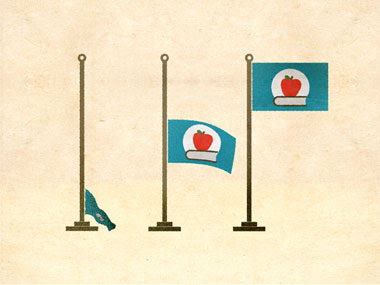Pay Teachers More
Nicholas Kristof
NY Times March 12, 2011
From the debates in Wisconsin and elsewhere about public sector unions, you might get the impression that we’re going bust because teachers are overpaid. That’s a pernicious fallacy. A basic educational challenge is not that teachers are raking it in, but that they are underpaid. If we want to compete with other countries, and chip away at poverty across America, then we need to pay teachers more so as to attract better people into the profession.
Until a few decades ago, employment discrimination perversely strengthened our teaching force. Brilliant women became elementary school teachers, because better jobs weren’t open to them. It was profoundly unfair, but the discrimination did benefit America’s children.
These days, brilliant women become surgeons and investment bankers — and 47 percent of America’s kindergarten through 12th-grade teachers come from the bottom one-third of their college classes (as measured by SAT scores). The figure is from a study by McKinsey & Company, “Closing the Talent Gap.”
Changes in relative pay have reinforced the problem. In 1970, in New York City, a newly minted teacher at a public school earned about $2,000 less in salary than a starting lawyer at a prominent law firm. These days the lawyer takes home, including bonus, $115,000 more than the teacher, the McKinsey study found.
We all understand intuitively the difference a great teacher makes. I think of Juanita Trantina, who left my fifth-grade class intoxicated with excitement for learning and fascinated by the current events she spoke about. You probably have a Miss Trantina in your own past.
One Los Angeles study found that having a teacher from the 25 percent most effective group of teachers for four years in a row would be enough to eliminate the black-white achievement gap.
Recent scholarship suggests that good teachers, even kindergarten teachers, increase their students’ earnings many years later. Eric A. Hanushek of Stanford University found that an excellent teacher (one a standard deviation better than average, or better than 84 percent of teachers) raises each student’s lifetime earnings by $20,000. If there are 20 students in the class, that is an extra $400,000 generated, compared with a teacher who is merely average.
A teacher better than 93 percent of other teachers would add $640,000 to lifetime pay of a class of 20, the study found.
Look, I’m not a fan of teachers’ unions. They used their clout to gain job security more than pay, thus making the field safe for low achievers. Teaching work rules are often inflexible, benefits are generous relative to salaries, and it is difficult or impossible to dismiss teachers who are ineffective.
But none of this means that teachers are overpaid. And if governments nibble away at pensions and reduce job security, then they must pay more in wages to stay even.
Moreover, part of compensation is public esteem. When governors mock teachers as lazy, avaricious incompetents, they demean the profession and make it harder to attract the best and brightest. We should be elevating teachers, not throwing darts at them.
Consider three other countries renowned for their educational performance: Singapore, South Korea and Finland. In each country, teachers are drawn from the top third of their cohort, are hugely respected and are paid well (although that’s less true in Finland). In South Korea and Singapore, teachers on average earn more than lawyers and engineers, the McKinsey study found.
“We’re not going to get better teachers unless we pay them more,” notes Amy Wilkins of the Education Trust, an education reform organization. Likewise, Jeanne Allen of the Center for Education Reform says, “We’re the first people to say, throw them $100,000, throw them whatever it takes.”
Both Ms. Wilkins and Ms. Allen add in the next breath that pay should be for performance, with more rigorous evaluation. That makes sense to me.
Starting teacher pay, which now averages $39,000, would have to rise to $65,000 to fill most new teaching positions in high-needs schools with graduates from the top third of their classes, the McKinsey study found. That would be a bargain.
Indeed, it makes sense to cut corners elsewhere to boost teacher salaries. Research suggests that students would benefit from a tradeoff of better teachers but worse teacher-student ratios. Thus there are growing calls for a Japanese model of larger classes, but with outstanding, respected, well-paid teachers.
Teaching is unusual among the professions in that it pays poorly but has strong union protections and lockstep wage increases. It’s a factory model of compensation, and critics are right to fault it. But the bottom line is that we should pay teachers more, not less — and that politicians who falsely lambaste teachers as greedy are simply making it more difficult to attract the kind of above-average teachers our above-average children deserve.
































